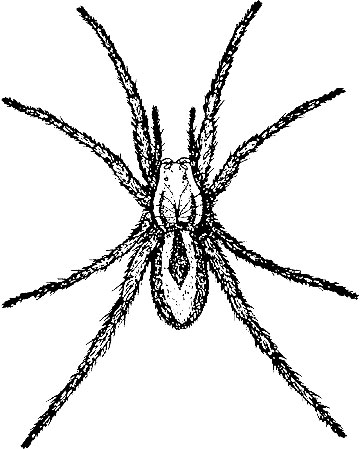Wolf spiders
Nonpoisonous spiders

There are many species of wolf spiders (Lycosidae) and they are widely distributed and common. They vary in size from medium to large, some species measuring 2 to 3 inches in diameter. Wolf spiders have long, stout legs — the fourth pair being the longest. The last two pairs of legs have longer hairs than the first two pairs.
Wolf spiders are found in a variety of habitats, usually near moist areas such as leaf litter, low-growing vegetation, the edges of streams, ponds or rivers, and on sandbars. They are known to dig burrows or tunnel into natural cavities under objects. They actively stalk their prey during the night, preying on ground-dwelling insects and other spiders. Wolf spiders are known for their wandering habits, and it is not unusual to find some that have wandered indoors.
Female wolf spiders spin an egg sac attached to their spinnerets. They are more aggressive when carrying an egg sac. When wolf spiderlings hatch, they crawl onto the mother's back and she carries them around for a short period of time. The young of most wolf spiders pass the winter half-grown and finish development during the following summer.